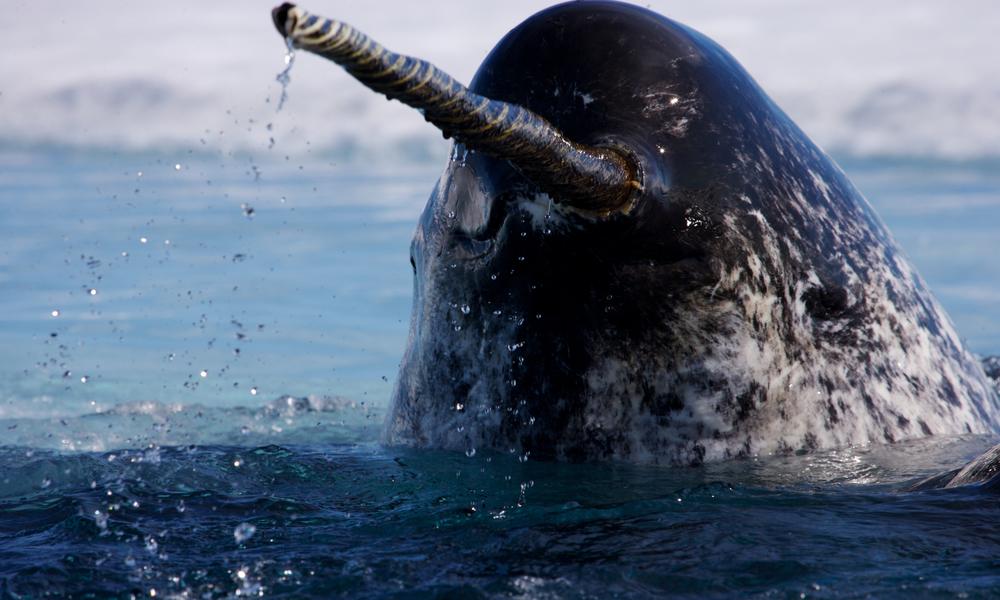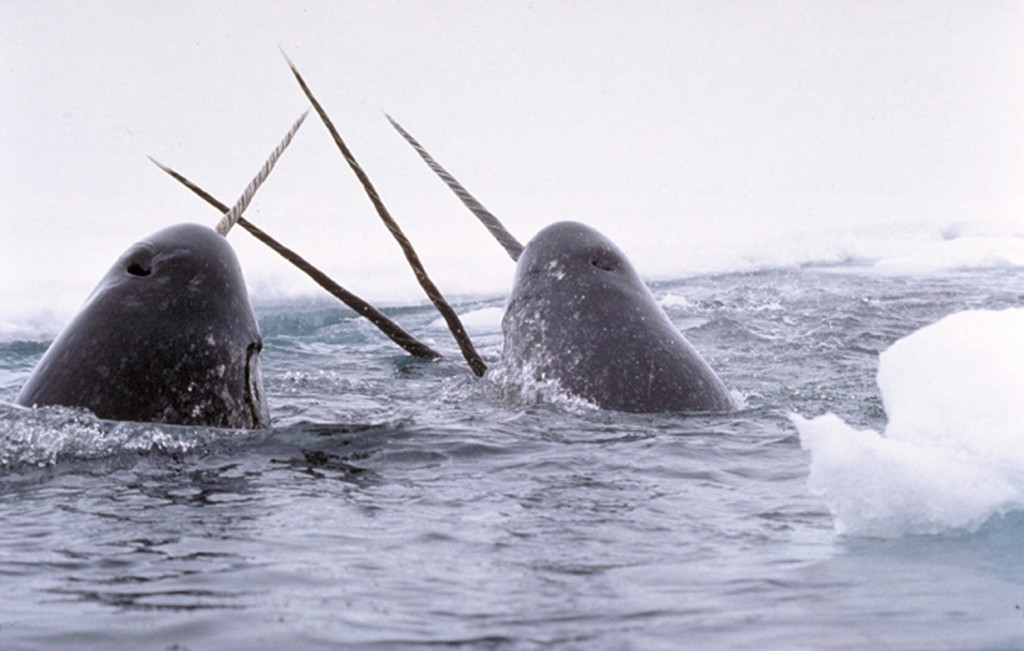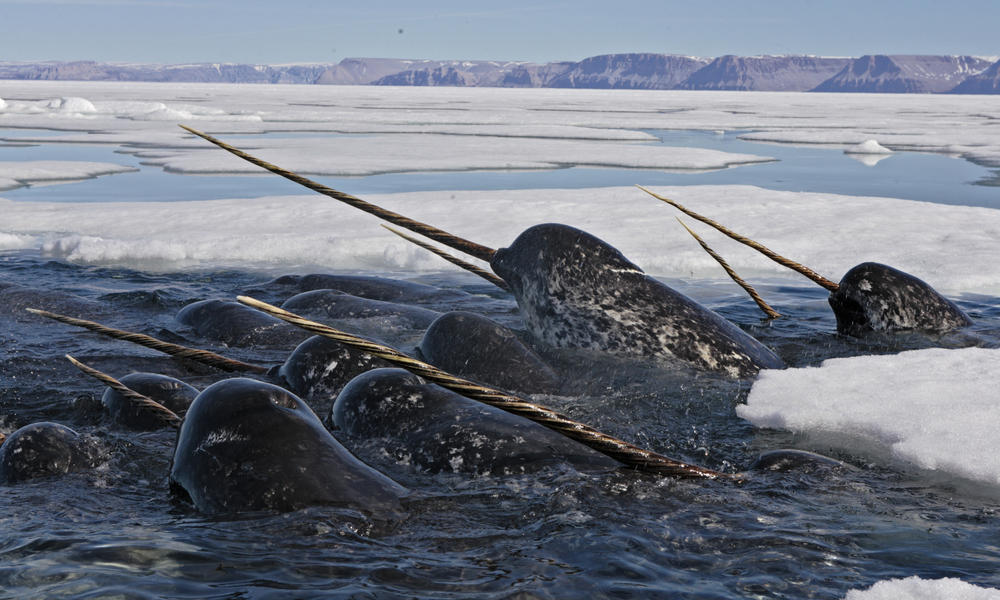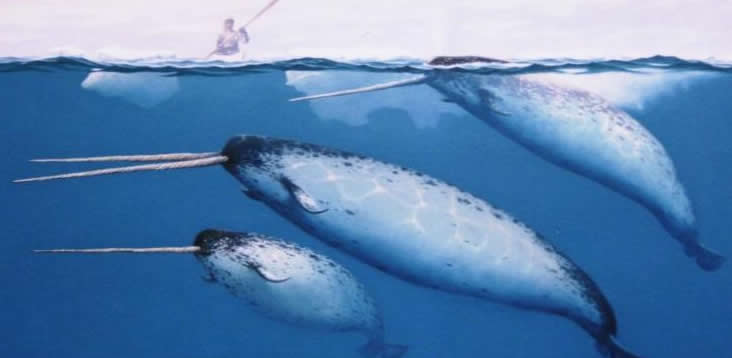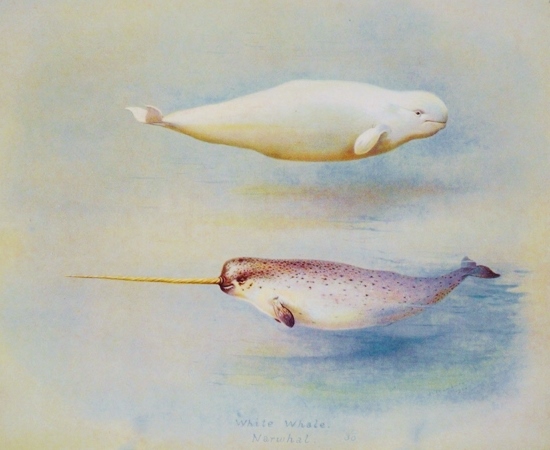Narwhal: The Mighty Sword Wielding ‘Corpse Whale’
The narwhal is a gnarly looking guy by all accounts. Not many people get to see them because they only live in the Spartan northerly seas of Greenland, Canada and Russia. There are an estimated 75,000 left in the wild, which means they’re classed as ‘near threatened’.
Unlike other deep-sea mammals, it doesn’t move very far south throughout the year, or for breeding purposes. The narwhal just slips from coves in the winter to the open ocean in the summer.
Excluding their tusk they can stretch to over 5m in length (females slightly less) and can easily weigh more than a tonne, but I don’t suppose narwhals are too concerned about their weight floating around in all of that freezing water.
Feeding & Mortality
In the winter this arctic predator dines mostly on flatfish beneath the ice pack and in summer switches its diet to cod and halibut. The narwhal is thought to chase their prey until they are within spitting distance, then simply hoover the fish into its mouth with a powerful sucking action.
The narwhal often dives as deep as one mile down and can hold its breath effortlessly for 25 minutes at a time. Having said that, one of the major causes of death for narwhals is suffocation when sea ice freezes over; if there is little or no wind the ice does not begin to crack as expected and locks them in an icy tomb.
The worst known mass death caused by entrapment was in Western Greenland in 1915 when around 1000 narwhals met their maker. The other main cause of death, especially for younger individuals, is starvation. The far north is a tough place to carve out an existence no matter how well adapted you are.
As for predation, polar bears will have a crack at them when they surface at their breathing holes, especially the youngsters. Greenland sharks, walruses and orcas will pick off the occasional victim too but by far the biggest threat to them is good old mankind.
MORE STRANGE ANIMALS:
DUCK BILLED PLATYPUS: WEIRDER THAN YOU THOUGHT
POTOO: NATURE’S MOST SURPRISED BIRD
Species & Etymology
With large forehead melons, no dorsal fins and short snouts the narwhals are the only other members of the Monodontidae family along with the beluga whale. They are often referred to as the white whales. The name narwhal actually comes from an Old Norse word nár, which means “corpse”, referring to the whitish mottled skin that looks like that of a drowned sailor. Their propensity to lie on the surface in the summer (called “logging”) only helped to solidify the name.
The Narwhal Tusk
Its distinctive proud tusk is actually an extended upper left canine and can grow to a mighty 3m in length. The tusks are hollow and weigh around 10kg. One in 500 narwhals grow two tusks and about 15% of females grow them too strangely, but they’re smaller and have a less prominent spiral pattern.
The tusks are surrounded around the base by vestigial teeth which aren’t used and seem to be an evolutionary left over.
Despite its fierce appearance it’s generally thought that the prong acts in the same way as the peacock’s tail, i.e. for social status and sexual attraction. It’s very rarely seen being used in battles or for breaking ice which is sort of surprising really.
Another surprising fact about the narwhal’s tusk is that it is innervated, in other words it has sensory organs along its length with millions of nerve endings. When narwhals congregate, sometimes as many as 1000 at a time, they rub tusks together – “tusking” which may be an aid to social bonds or reaffirming status in a group.
Because these animals inhabit such harsh environs and spend a great deal of time below ice, fairly little is known about them. What we do know, however, is that if we’re not careful we’ll lose these pale submarine freak shows forever.

